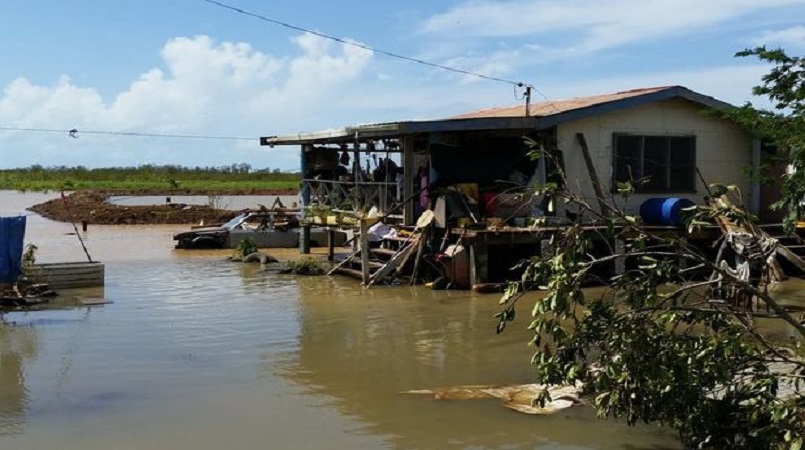
Climate experts say ocean temperatures played a key role in strengthening Cyclone Winston, which slammed into Fiji on Saturday night with 200-mph winds, killing at least 28 people and flattening villages.
“The warmer the sea-surface temperature, the stronger a tropical cyclone can get,” Bob Henson, a meteorologist and climate blogger at Weather Underground, told Al Jazeera in an email.
“Sea-surface temperatures have been especially warm this year across much of the tropical Pacific, largely as a result of the current El Niño on top of the long-term warming,” Henson said.
In addition to the past year’s record temperatures, the weather phenomenon known as El Niño — a periodic warming in sea surface temperatures in the western equatorial Pacific — is also believed to have played a role.
Fiji’s meteorological service last October issued its seasonal forecast warning of above-average cyclone activity for certain parts of the South Pacific because of El Niño, said Clare Nullis, media officer for the World Meteorological Organization.
"The impacts of tropical cyclones, especially on small island states, are expected to increase because of more torrential rainfall and higher sea levels associated with climate change," Nullis added.
Because El Niño years translate to a lower sea level and rainfall in the western Pacific where Fiji lies, those effects of climate change may not have contributed to the storm's strength, "but there does seem to be a link with El Niño," Nullis said.
Flood warnings remained in effect in some low-lying areas of Fiji as Winston moved farther away on Monday, according to the Fiji Meteorological Service. Officials said the death toll could rise once reports come in from Fiji’s remote, outer islands, which have been cut off by the storm.
Cyclone Winston forced thousands of residents to flee to evacuation centers or hunker down in their own homes Saturday night.
Climate models generally agree that the world can expect a greater proportion of storms to reach Category 5 strength in in the coming decades. That’s why Fiji has taken the United Nations climate negotiations so seriously — becoming the first nation in the world to ratify the treaty last week that was signed by 195 nations in Paris in December.
Fiji, like other Pacific island nations vulnerable to rising seas, storm surges and extreme weather like Cyclone Winston, will likely see more extremely strong storms in the future as ocean temperatures continue to rise, experts said.
The world’s oceans absorb much of Earth’s extra heat, and with global temperatures on the rise because of climate change, ocean temperatures have soared, data from the Environmental Protection Agency (EPA) has shown. Experts have shown that the earth’s oceans have soaked up more than 90 percent of the atmosphere’s excess heat trapped by greenhouse gases.
“Tropical cyclones are heat engines at heart: they transfer energy from low-latitude oceans to the higher-latitude atmosphere,” Henson wrote in a blog post Monday.
“As human-produced greenhouse gases continue to pump energy into Earth’s oceans (where more than 90 percent of the excess heat from those greenhouse gases is stored), it is no surprise that some of that heat is being expressed in the form of record-setting typhoons, hurricanes, and cyclones," Henson added.
